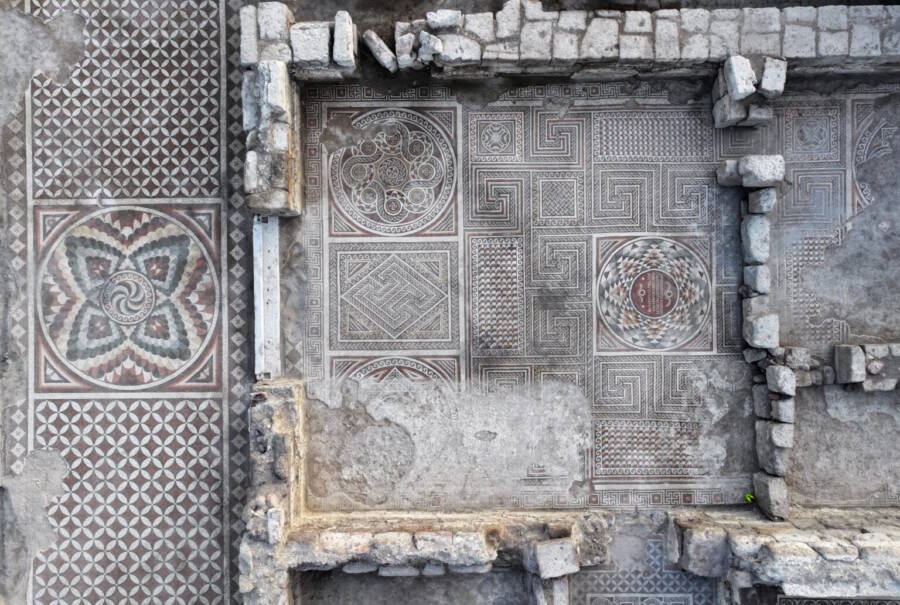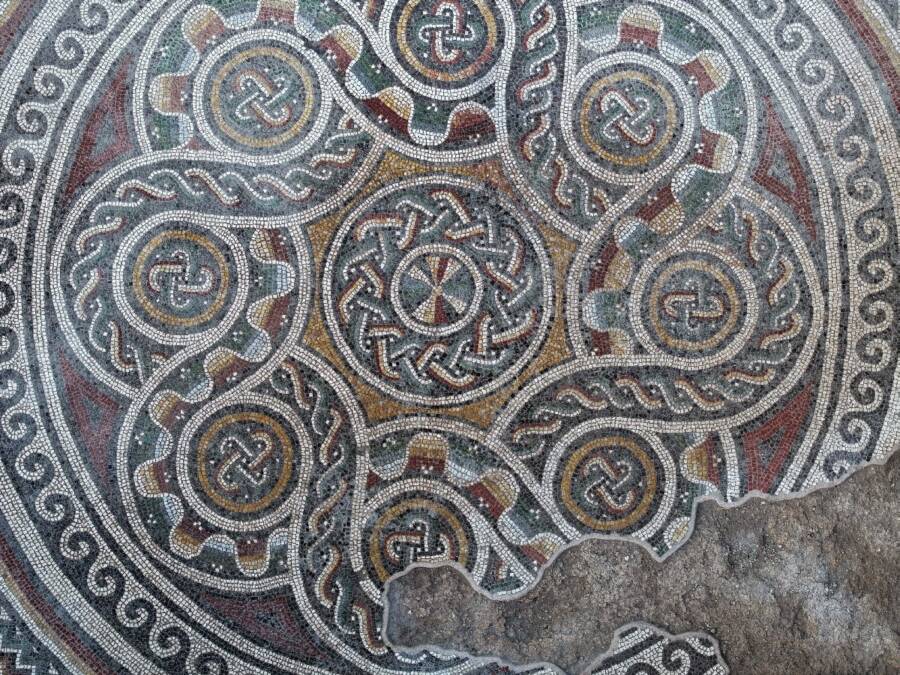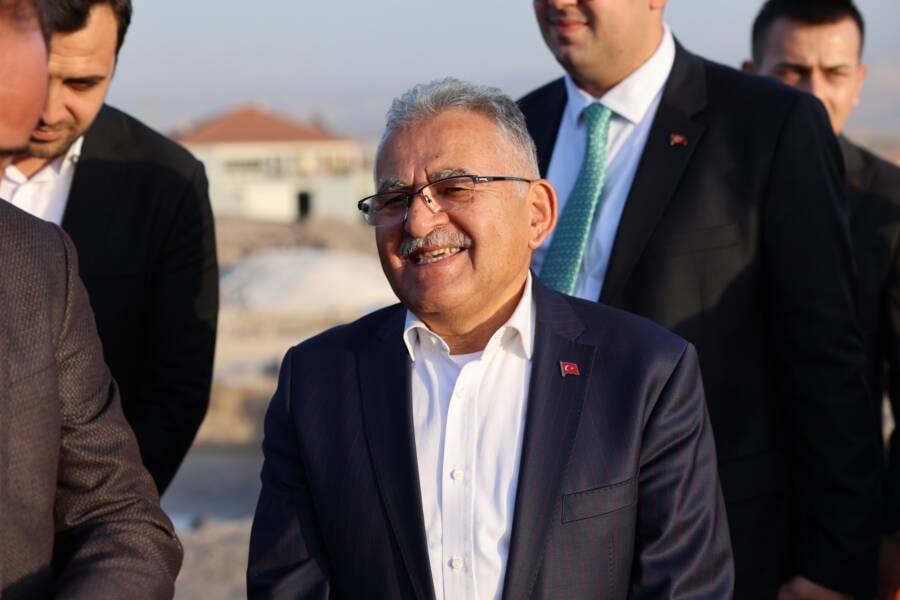The work is the largest floor mosaic ever uncovered in Turkey's Central Anatolia Region.

Sercan Küçükşahin for Anadolu AjansıOf the 43,000 square feet excavated at the site so far, 6,400 square feet are mosaic tiles.
Back in 2010, archaeologists excavating a site in the Turkish city of Kayseri uncovered remnants of a late Roman and early Byzantine residence laid with an ornate mosaic floor. It was a remarkable discovery that promised more revelations with further excavations.
Unfortunately, excavation work was put on hold due to legal reasons, and remained stagnant for the better part of a decade. It wasn’t until 2020 that archaeologists were finally able to resume their work — and the ongoing excavations have revealed a site of truly epic proportions.
The research, conducted by a team from Nevşehir Haci Bektaş Veli University, has, in the past three years, uncovered a vast villa comprised of around 33 rooms and over 6,400 square feet of floor mosaics, indicating that this had once been a “high-level residence.”
“In the Central Anatolia Region, which includes the Cappadocia region, we do not see such a large residence with floor mosaics,” Can Erpek, director of the excavation, told Artnet. “We have not yet fully reached the boundaries of this residence.”

Sercan Küçükşahin for Anadolu AjansıAn aerial overview of the excavation site.
The “highly valuable” floor mosaic is primarily geometrically patterned and features Latin and Greek inscriptions, as well as motifs like Solomon’s knots, wave bands, ribbons, diamonds, and swirls, Ancient Origins reports.
The name “Hyacinthus,” believed to be the name of the villa’s owner, is also inscribed on the mosaic. In a translated statement, Erpek said that this inscription indicates that the residence may have once belonged to an administrator of imperial states in the region. If that is the case, it would be a first-of-its-kind discovery in the region.
“We may have reached an important high-level administrator of the imperial estates in the region; such a residence has not been reached until now,” Erpek said. “Our excavations will continue next year.”
At first, researchers dated the site, known as İncesu, back to the fourth century C.E., but new data suggests parts of it may have actually been constructed a century earlier, and used up until at least the sixth century.
“It is possible to say that the first construction phase, which we initially thought was the fourth century, dates back to the third century,” Erpek said. “In our studies, we may be able to find data that it dates back to an earlier period in Rome… The structure continued to be used during the Byzantine period. Then, it continued to be used after the Turks came to the region during the Turkish-Islamic period.”

Sercan Küçükşahin for Anadolu AjansıThe mosaic is the largest floor mosaic ever found in the region.
The excavation is part of a larger, ongoing research project in Kayseri, with similar archaeological research being conducted at five other locations across the region.
According to mayor Memduh Büyükkılıç, the aim of these projects is to “reveal these cultural riches, to bring them to the surface, to present them for the benefit of humanity, and to always remember Kayseri positively in scientific terms.”
The Kayseri Metropolitan Municipality is providing additional support to the project, including establishing an exhibition hall and a museum to highlight the ancient discoveries in the region.
However, as the warm weather season in Kayseri comes to an end, the archaeological will temporarily be put on hold.
“We have come to the end of the season,” Büyükkılıç said. “Now we will cover [the mosaics], put them to sleep, and believe that we will work even more efficiently next season… We emphasized once again that Anatolia was the cradle of civilization.”

Kayseri Metropolitan MunicipalityMayor Memduh Büyükkılıç at the İncesu archaeological site.
Because of the region’s rich history, Büyükkılıç added that the municipality is working to declare the region as an archaeological site to bring in tourism and highlight Kayseri’s prominence in the ancient world.
“Kayseri has proven once again that it has been the center of trade since history,” he said, “reflected in the richness of different civilizations in every field, as the center of tolerance, as a safe port, and as the center of attraction in Anatolia. It is a city that has made a name for itself.”
After learning about the discovery of this massive mosaic, read about the 2,000-year-old Roman mosaic that was unearthed in central London. Or, read about the 1,500-year-old mosaic unearthed in Israel that depicts scenes of life on the Nile.





